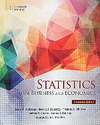買這商品的人也買了...
-
 半導體製造技術 (Semiconductor Manufacturing Technology)
半導體製造技術 (Semiconductor Manufacturing Technology)$780$764 -
 Critical Testing Processes: Plan, Prepare, Perform, Perfect
Critical Testing Processes: Plan, Prepare, Perform, Perfect$2,540$2,413 -
 Digital Integrated Circuits, 2/e (IE-Paperback)
Digital Integrated Circuits, 2/e (IE-Paperback)$1,190$1,166 -
 深入淺出設計模式 (Head First Design Patterns)
深入淺出設計模式 (Head First Design Patterns)$880$695 -
 Perl 學習手冊 (Learning Perl, 4/e)
Perl 學習手冊 (Learning Perl, 4/e)$580$458 -
 數位積體電路分析與設計 (Analysis and Design of Digital Integrated Circuits)
數位積體電路分析與設計 (Analysis and Design of Digital Integrated Circuits)$650$585 -
 SQL 語法範例辭典
SQL 語法範例辭典$550$435 -
 Computer Security: Principles and Practice (Paperback)
Computer Security: Principles and Practice (Paperback)$1,120$1,098 -
 寫給 SA 的 UML/MDA 實務手冊
寫給 SA 的 UML/MDA 實務手冊$350$298 -
 深入淺出物件導向分析與設計 (Head First Object-Oriented Analysis and Design)
深入淺出物件導向分析與設計 (Head First Object-Oriented Analysis and Design)$880$695 -
 積體電路測試實務
積體電路測試實務$280$252 -
 現代嵌入式系統開發專案實務-菜鳥成長日誌與專案經理的私房菜
現代嵌入式系統開發專案實務-菜鳥成長日誌與專案經理的私房菜$600$480 -
 Statistical Quality Control : A Modern Introduction , 6/e (IE-Paperback)
Statistical Quality Control : A Modern Introduction , 6/e (IE-Paperback)$1,250$1,225 -
 全球最強 VMware vSphere 4 企業環境建構
全球最強 VMware vSphere 4 企業環境建構$860$731 -
 Fun 心玩攝影
Fun 心玩攝影$580$458 -
 Google Android 2.X 應用程式開發實戰
Google Android 2.X 應用程式開發實戰$520$411 -
 Google!Android 2 手機應用程式設計入門, 3/e
Google!Android 2 手機應用程式設計入門, 3/e$530$419 -
 Google Android SDK 開發範例大全 2
Google Android SDK 開發範例大全 2$890$703 -
 巧用 jQuery
巧用 jQuery$490$387 -
 精密量測檢驗(含實習), 4/e
精密量測檢驗(含實習), 4/e$480$432 -
 深入淺出 Android 系統原理及開發要點
深入淺出 Android 系統原理及開發要點$450$351 -
 HTML5 & API 網頁程式設計
HTML5 & API 網頁程式設計$450$356 -
 Statistical Process Control, 6/e (Paperback)
Statistical Process Control, 6/e (Paperback)$2,390$2,271 -
 Semiconductor Process Reliability in Practice (Hardcover)
Semiconductor Process Reliability in Practice (Hardcover)$6,690$6,356 -
 統計品質管制:導論, 8/e (Montgomery: Introduction to Statistical Quality Control, 8/e)
統計品質管制:導論, 8/e (Montgomery: Introduction to Statistical Quality Control, 8/e)$980$931
相關主題
商品描述
Description
A practical guide to semiconductor manufacturing from process control to yield modeling and experimental design
Fundamentals of Semiconductor Manufacturing and Process Control covers all issues involved in manufacturing microelectronic devices and circuits, including fabrication sequences, process control, experimental design, process modeling, yield modeling, and CIM/CAM systems. Readers are introduced to both the theory and practice of all basic manufacturing concepts.
Following an overview of manufacturing and technology, the text explores process monitoring methods, including those that focus on product wafers and those that focus on the equipment used to produce wafers. Next, the text sets forth some fundamentals of statistics and yield modeling, which set the foundation for a detailed discussion of how statistical process control is used to analyze quality and improve yields.
The discussion of statistical experimental design offers readers a powerful approach for systematically varying controllable process conditions and determining their impact on output parameters that measure quality. The authors introduce process modeling concepts, including several advanced process control topics such as run-by-run, supervisory control, and process and equipment diagnosis.
Critical coverage includes the following:
* Combines process control and semiconductor manufacturing
* Unique treatment of system and software technology and management of overall manufacturing systems
* Chapters include case studies, sample problems, and suggested exercises
* Instructor support includes electronic copies of the figures and an instructor's manual
Graduate-level students and industrial practitioners will benefit from the detailed exami?nation of how electronic materials and supplies are converted into finished integrated circuits and electronic products in a high-volume manufacturing environment.
Table of Contents
Preface.
Acknowledgments.
1. Introduction to Semiconductor Manufacturing.
Objectives.
Introduction.
1.1. Historical Evolution.
1.2. Modern Semiconductor Manufacturing.
1.3. Goals of Manufacturing.
1.4. Manufacturing Systems.
1.5. Outline for Remainder of the Book.
Summary.
Problems.
References.
2. Technology Overview.
Objectives.
Introduction.
2.1. Unit Processes.
2.2. Process Integration.
Summary.
Problems.
References.
3. Process Monitoring.
Objectives.
Introduction.
3.1. Process Flow and Key Measurement Points.
3.2. Wafer State Measurements.
3.3. Equipment State Measurements.
Summary.
Problems.
References.
4. Statistical Fundamentals.
Objectives.
Introduction.
4.1. Probability Distributions.
4.2. Sampling from a Normal Distribution.
4.3. Estimation
4.4. Hypothesis Testing.
Summary.
Problems.
Reference.
5. Yield Modeling.
Objectives.
Introduction.
5.1. Definitions of Yield Components.
5.2. Functional Yield Models.
5.3. Functional Yield Model Components.
5.4. Parametric Yield.
5.5. Yield Simulation.
5.6. Design Centering.
5.7. Process Introduction and Time-to-Yield.
Summary.
Problems.
References.
6. Statistical Process Control.
Objectives.
Introduction.
6.1. Control Chart Basics.
6.2. Patterns in Control Charts.
6.3. Control Charts for Attributes.
6.4. Control Charts for Variables.
6.5. Multivariate Control.
6.6. SPC with Correlated Process Data.
Summary.
Problems.
References.
7. Statistical Experimental Design.
Objectives.
Introduction.
7.1. Comparing Distributions.
7.2. Analysis of Variance.
7.3. Factorial Designs.
7.4. Taguchi Method.
Summary.
Problems.
References.
8. Process Modeling.
Objectives.
Introduction.
8.1. Regression Modeling.
8.2. Response Surface Methods.
8.3. Evolutionary Operation.
8.4. Principal-Component Analysis.
8.5. Intelligent Modeling Techniques.
8.6. Process Optimization.
Summary.
Problems.
References.
9. Advanced Process Control.
Objectives.
Introduction.
9.1. Run-by-Run Control with Constant Term Adaptation.
9.2. Multivariate Control with Complete Model Adaptation.
9.3. Supervisory Control.
Summary.
Problems.
References.
10. Process and Equipment Diagnosis.
Objectives.
Introduction.
10.1. Algorithmic Methods.
10.2. Expert Systems.
10.3. Neural Network Approaches.
10.4. Hybrid Methods.
Summary.
Problems.
References.
Appendix A: Some Properties of the Error Function.
Appendix B: Cumulative Standard Normal Distribution.
Appendix C: Percentage Points of the χ2 Distribution.
Appendix D: Percentage Points of the t Distribution.
Appendix E: Percentage Points of the F Distribution.
Appendix F: Factors for Constructing Variables Control Charts.
Index.
商品描述(中文翻譯)
**描述**
一本實用的半導體製造指南,涵蓋從過程控制到產量建模和實驗設計的各個方面
《半導體製造與過程控制基礎》涵蓋了製造微電子設備和電路所涉及的所有問題,包括製造序列、過程控制、實驗設計、過程建模、產量建模以及CIM/CAM系統。讀者將接觸到所有基本製造概念的理論和實踐。
在對製造和技術的概述之後,文本探討了過程監控方法,包括專注於產品晶圓的方法和專注於生產晶圓所用設備的方法。接下來,文本提出了一些統計學和產量建模的基本概念,這為詳細討論如何使用統計過程控制來分析質量和提高產量奠定了基礎。
對統計實驗設計的討論為讀者提供了一種強大的方法,系統地變化可控的過程條件,並確定其對測量質量的輸出參數的影響。作者介紹了過程建模的概念,包括幾個先進的過程控制主題,如逐次運行、監控控制以及過程和設備診斷。
關鍵內容包括:
* 結合過程控制和半導體製造
* 獨特的系統和軟體技術處理以及整體製造系統的管理
* 各章節包括案例研究、範例問題和建議練習
* 教師支持包括圖形的電子副本和教師手冊
研究生和工業從業者將受益於對電子材料和供應品如何在高產量製造環境中轉化為成品集成電路和電子產品的詳細檢視。
**目錄**
**前言**
**致謝**
**1. 半導體製造概論**
**目標**
**介紹**
**1.1. 歷史演變**
**1.2. 現代半導體製造**
**1.3. 製造的目標**
**1.4. 製造系統**
**1.5. 本書其餘部分的概要**
**摘要**
**問題**
**參考文獻**
**2. 技術概述**
**目標**
**介紹**
**2.1. 單元過程**
**2.2. 過程整合**
**摘要**
**問題**
**參考文獻**
**3. 過程監控**
**目標**
**介紹**
**3.1. 過程流和關鍵測量點**
**3.2. 晶圓狀態測量**
**3.3. 設備狀態測量**
**摘要**
**問題**
**參考文獻**
**4. 統計基礎**
**目標**
**介紹**
**4.1. 機率分佈**
**4.2. 從正態分佈中取樣**
**4.3. 估計**
**4.4. 假設檢驗**
**摘要**
**問題**
**參考文獻**
**5. 產量建模**
**目標**
**介紹**
**5.1. 產量組件的定義**
**5.2. 功能產量模型**
**5.3. 功能產量模型組件**
**5.4. 參數產量**
**5.5. 產量模擬**
**5.6. 設計中心化**































